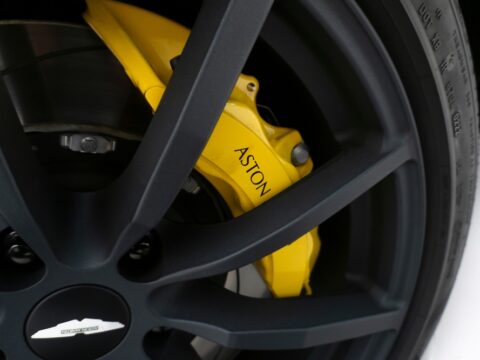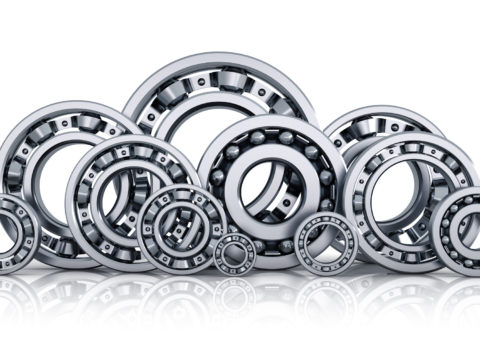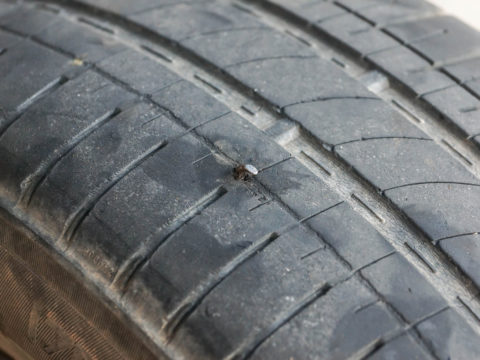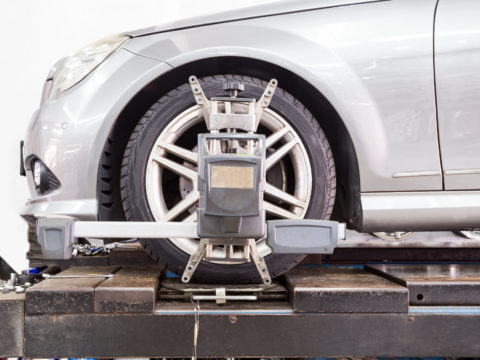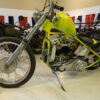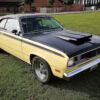Tires are what connect your vehicle to the road and provide traction so you can safely drive around. When a tire fails, the results can be severe. One vital aspect of caring for tires is verifying that they have the correct pressure.
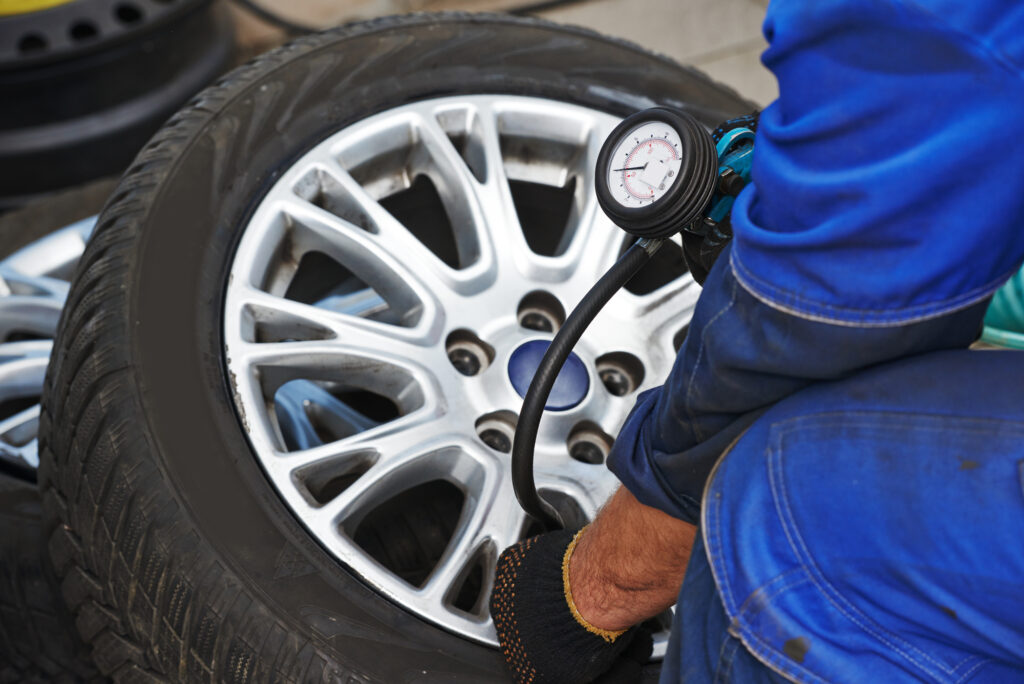
When should you check your tire pressure? Is there a difference in cold vs. hot tire pressure? This article has the answers you need.
Contents
What Is the Difference Between Cold Tire Pressure and Hot Tire Pressure?
As any car drives down the road, there is friction between the tires and the road surface. This friction generates heat, which causes the air inside the tires to expand. That expansion increases the tire pressure.
Cold vs. hot tire pressure can be dramatically different. The reading you get while stopped for extended periods will be different than the reading taken shortly after a long drive.
High-speed driving and ambient air temperature fluctuations can cause additional changes.
Because most tire and car manufacturers rate tire pressure on a cold basis, you should follow suit. Check your tire pressure when the tires are cold, meaning that the car hasn’t been driven in some time, at least 30 minutes, ideally.
You don’t need to wait for the ambient air temperature to be cold. Checking the tire pressure cold means that the car hasn’t been driven, and the air inside the tires hasn’t expanded due to the driving.
Normal Tire Pressure and Temperature
There are two parts to tire pressure in every vehicle. The first is the maximum pressure the tire can handle, provided in pounds per square inch or PSI. This rating is on the tire itself.
The second aspect of having the correct tire pressure is the vehicle’s tire pressure recommendation. This rating is the tire pressure you should use.
The manufacturer works hard to identify the correct tire pressure for driving, giving you traction for accelerating, cornering, and braking.
Since air expands as it warms up, the ambient air temperature and the temperature of the tires themselves impact the pressure. This heat will cause the tire pressure to rise.
Should Tire Pressure Be Checked Hot or Cold?
The recommended tire pressure ratings from the vehicle and tire manufacturers are based on cold PSI. Should tire pressure be checked hot or cold? You need to check the pressure when the tires are cold.
You don’t need to find an oversized fridge, and you don’t want to wait for winter to roll around. Cold tire pressure means that you have not driven on the tires recently. And that’s when you should check the pressure.
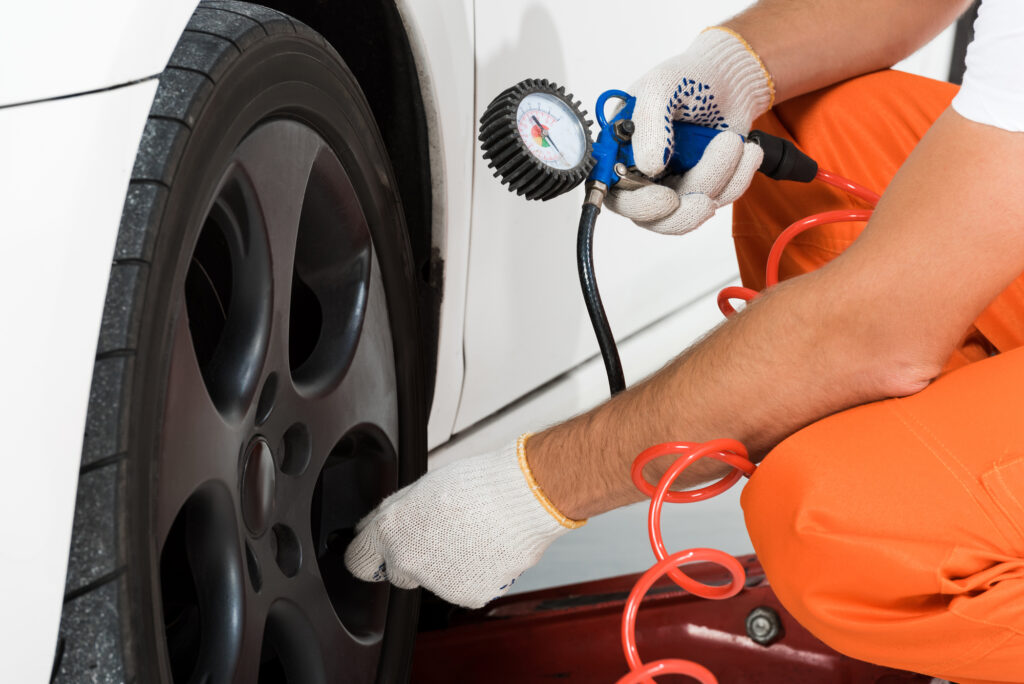
How Temperature Affects Tire Pressure
Physics tells us that as nearly anything heats up, it will expand. When talking about the air stuck inside a tire, this expansion can be significant.
Vehicles often weigh many thousands of pounds. All that weight usually rests on four rubber tires on the road. As you can imagine, this is a lot for the tires to deal with. As you drive down the road, that weight and friction generate heat.
The result is that the cold vs. hot tire pressure will be dramatically different. The friction expands the air, resulting in increased tire pressure.
Changes in ambient temperature also change the tire pressure. This change is more gradual and usually associated with changes in seasons. But it is another reason to check your tire pressures regularly, especially if the ambient air temperature has shifted dramatically.
Is Recommended Tire Pressure Hot or Cold?
You’ll find the maximum tire pressure rating on the outside of your tires. On almost every tire, this is the cold PSI.
Additionally, the tire rating for your vehicle, which is what you should follow in most cases, is also based on the cold PSI.
The only time you don’t want to follow this is when using tires that don’t match the manufacturer’s recommendation. In that case, a professional should help you identify the proper tire pressure.
So is the recommended tire pressure hot or cold? It’s always cold.
Tire Pressure in Summer vs Winter
While the impact of driving changes the tire pressure immediately, temperature fluctuations due to seasonal changes also impact tire pressure. Additionally, the different needs during summer and winter might change how much air you want to put in your tires.
Summer Tire Pressure
When the ambient air temperature increases over the summer months, the air inside your tire will also change. Since air expands when warmed up, your tire pressure will increase as the ambient air temperature increases. You might need to release some air from your tires.
This change is why it’s critical to check your tire pressure regularly throughout the year. This fact is especially true when you’re in an area with extreme temperature changes.
Winter Tire Pressure
During the winter seasons, the ambient air temperature drops, and the air inside your tires does the same. This drop causes the tire pressure to go down, sometimes resulting in the need to add air to your tires.
While you should almost always follow the vehicle’s recommended tire pressure rating, some people use slightly lower tire pressure during winter.
By lowering the pressure, you increase the tire’s contact with the road. This increased surface can provide additional traction on icy or snow-covered roads. But should be used sparingly in extreme situations. The recommended tire pressure is what the car was designed to use.
How To Correctly Check Tire Pressure With a Tire Pressure Gauge
To check your tire pressure, follow this simple four-step process:
- Step 1: Ensure your tires are cold. Ideally, you haven’t driven your vehicle in about 30 minutes.
- Step 2: Locate the manufacturer’s recommended tire pressure. This rating is usually found on a sticker near the driver’s seat, door, or inside the door jamb. It also might be in the owner’s manual. Sometimes the front tires require a different pressure than the rear.
- Step 3: Unscrew the valve cap and press the tire pressure gauge on the valve opening to check the cold PSI rating of your tire. Read what it says by seeing how far the needle or stick moves.
- Step 4: Adjust the pressure as needed. If it is too high, release some air by pushing in the center point of the valve. If the pressure is too low, add air by using an air compressor found at most gas stations or auto service locations. Many mechanics will help you correct your tire pressure for free.

